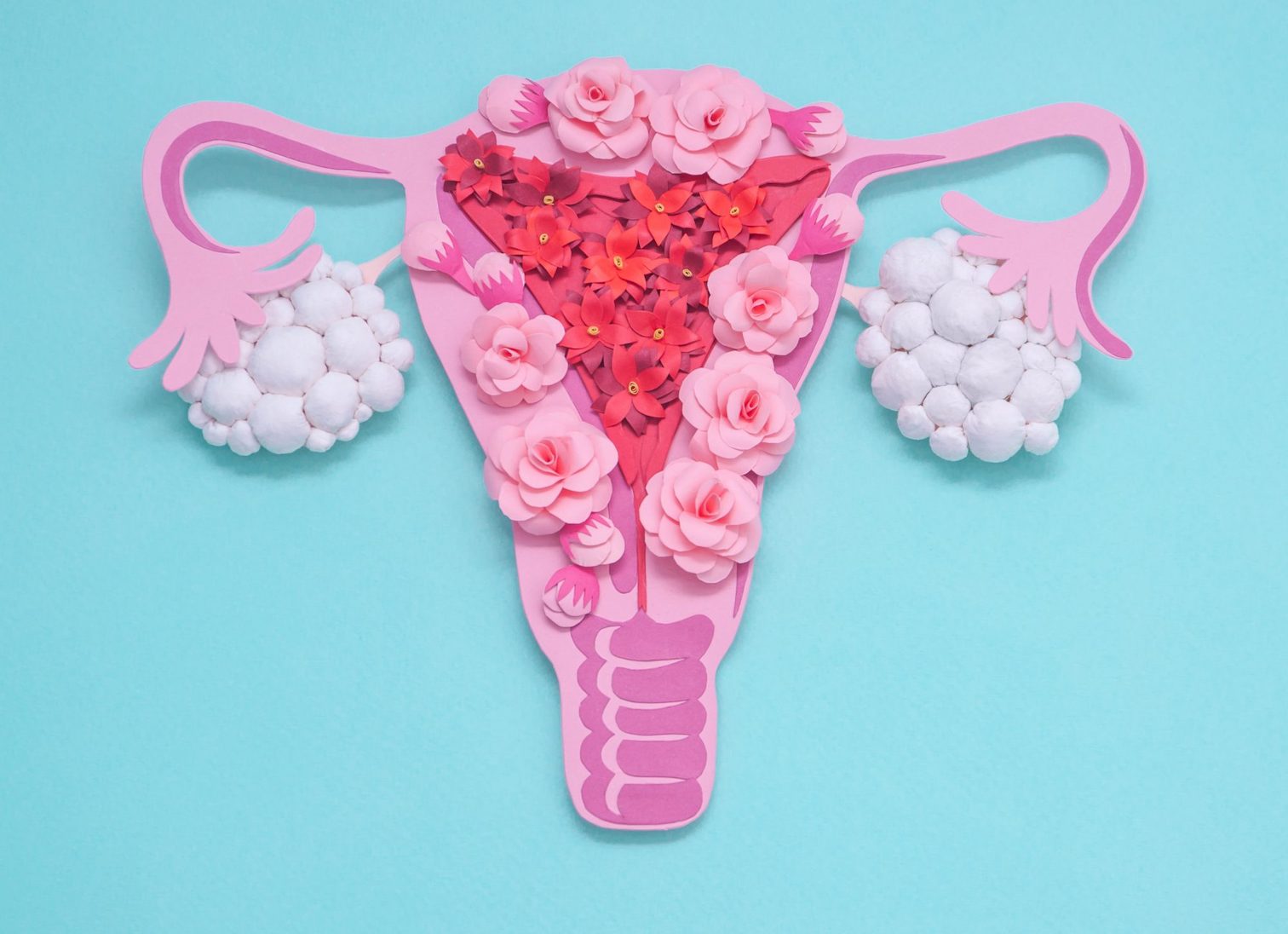
We often hear about the toxins in the environment, but what are they and how do they really affect us? There’s one group that can be particularly nasty for women, especially if we already have some hormone imbalances such as PCOS, or we’re in menopause. Xenostrogens.
Xenoestrogens are environmental pollutants with chemical structures that can mimic oestrogen in the body. These chemicals can lead to detrimental effects to our bodies, therefore awareness of xenoestrogens and avoidance where possible are the key to good health.
Research shows that pollution by xenoestrogens can affect:
By mimicking the action of our own oestrogen, xenoestrogens can affect our bodies and alter our hormone activity.
Currently, approximately 70,000 chemicals have been registered as having hormonal effects. These chemicals have been seen to increase the oestrogen load in the body over time and are sometimes more difficult for the liver to detoxify and clear from the body. These chemicals can be found in our water, air, soil and food chain, as well as in many cosmetic and household products.
The human body is being bombarded with these harmful chemicals every day which may over-burden the liver, weaken our immune systems and disrupt our delicate hormonal balance.
So, where can we find them? And how can we avoid them?
Think about:
Agricultural chemicals
Agricultural chemicals such as pesticides, fungicides and herbicides or hormones fed to cattle, pigs, poultry, and other livestock found in meat, dairy and eggs, are one of the biggest sources of xenoestrogens.
Household Cleaners and products
Many household products contain xenoestrogens, but specifically look out for laundry detergents and fabric softeners, as they may leave residues on clothing, towels, and things that touch our skin.
Cosmetics and Toiletries
Xenoestrogens absorbed by the skin are thought to be ten times more potent than those eaten or drunk, as they travel directly to the tissues instead of passing through the liver.
Therefore, be careful with your choices – look for natural plant-based products and check the ingredients carefully. Some things to avoid are:
Plastics
Plastics, especially soft plastics, contain many compounds that are considered to be xenoestrogens.
One type are phthalates, which are a kind of plasticizer which are often used to make plastics soft and flexible. These compounds can leach out over time or in response to heat or light.
Unfortunately, phthalates are used in a range of products from food containers and packaging to children's toys and bottles.
Bisphenol-A (BPA) is another offender that is used for food storage or to line tin cans for canned goods.
Although this protects the consumer from a metallic taste in the foods, BPA is a known xenoestrogen that can leach into the food when exposed to hear or acid.
Water
Unfortunately, water treatment plants are not currently designed to remove hormonal pollutants, and agricultural and pharmaceutical runoff have created a curious epidemic among fish and frogs in many waterways in the developed world.
Have a look at the products you use, food you eat, water your drink, plus storage and containers, cleaners and cosmetics.
Think about what you can afford to change, and maybe put in a plan to replace things gradually over time. Each small change you make will be a benefit to your health in the long term.
Did any of these surprise? What changes are you going to make?
Photo by Charles Deluvio on Unsplash

September is PCOS or Polycystic Ovary Syndrome Awareness Month. This is a condition which research shows affects over hundred million women worldwide, easily making it the most common hormone disorder of women in reproductive age and quite possibly the leading cause of infertility in women.
PCOS is a bit of a misnomer, as not everyone with the syndrome has polycystic ovaries, and not everyone with cysts on their ovaries has PCOS! Plus, the ‘cysts’ that women with PCOS have are not the same as cysts that may need to be removed. Rather they are where the ovarian follicles have not gone through the maturation process and have failed to reach ovulation stage leaving ‘cysts’ on the ovaries.
The way to officially diagnose PCOS was finally updated last year, and a three-step process is now recommended:
*eg Cushing’s syndrome, adrenal tumours, hypogonadotrophic hypogonadism, usually due to low body fat or intensive exercise, etc.
Alongside the ‘cystic’ ovaries and irregular/absent periods, there are several other symptoms which may denote PCOS:
These symptoms can be hugely debilitating and, in addition to these troubling symptoms, PCOS is associated with a long-term risk of diabetes and heart disease.
While the exact cause of PCOS is not fully understood, there are certain contributing factors:
But don’t despair! The good news is that research shows that changes to nutrition and lifestyle may help with the severity of symptoms.
Decrease levels of refined carbohydrates like sugary treats, bread, pasta, cakes, biscuits, etc.
Insulin’s role is to allow cells of the body to take in blood sugar (glucose) to be used as fuel or stored as fat. However, if there are high levels of sugary foods and drinks or refined carbohydrates (hello bread!) in our diets, our bodies need to keep producing lots of insulin.
Research shows that high levels of insulin in women with PCOS may cause the ovaries to overproduce testosterone, triggering our unwanted symptoms. Moving to a diet that is lower in these sorts of foods, but high in veggies, fibre and good quality protein can be helpful.
Include healthy fats and avoid unhealthy ones
Research shows that foods rich in omega-3 fatty acids, such as oily fish, like salmon, mackerel, and sardines, may be protective against increased PCOS symptoms due to the anti-inflammatory effect that they have on our bodies.
Plus, by avoiding trans-fats, those fats that can be found in deep-fried foods such as chips or crisps, or in shop-bought foods which contain partially hydrogenated fats/oils or shortening, can help reduce the inflammatory effect they have on our bodies. Inflammation, when our immune system is constantly activated, may be a trigger for PCOS.
Increase vitamin D-rich foods
Research shows that many women who suffer with PCOS have low levels of vitamin D. Vitamin D is a hugely important nutrient for us and does many essential jobs, including helping us to balance blood sugar and reduce inflammation; and research shows that adequate vitamin D levels are important for the development of healthy eggs and fertility.
Decreasing levels of stress – emotional, mental, physical
Stress hormones, such as cortisol, are hugely important as an essential part of our response to stress and/or fear and kickstart several body processes which aim to increase our chances of survival.
While this is great in the short-term, if the stress continues and becomes chronic, then this is where it can have a knock-on effect to our hormones, exacerbating our symptoms of PCOS. Ensuring that our blood sugar is balanced and that we are not over-exercising (very common in ladies with PCOS) can help to manage our physical stressors.
Plus, ensuring that we include quality self-care including yoga, meditation and time-off will help with mental stressors and to build stress resilience.
If PCOS symptoms are impacting your life, why not get in touch with me to discuss how a personalised nutrition plan might help? Book a free 30-minute health review today – just click here to book.

Your hormone balancing action plan
If you’re looking to balance your hormones, here are my five top tips:
Prioritise sleep
There are some actions you can take to make a good sleep much more likely. These include things like avoiding drinks containing caffeine after lunch, going to bed at the same time every day, keeping the temperature in your bedroom comfortable, keeping the bedroom completely dark so you’re not disturbed by light and making an effort to relax for at least 5 minutes before going to bed - a warm bath, massage, meditation and so on.
The biggest tip I can give you is to really ensure that you prioritise your sleep. Make a real effort to focus on all the things you can do to improve your sleep hygiene rather than ‘kind of’ doing it.
Move your body
Exercise can have a noticeable effect on hormones and mood. You might have heard how exercise releases endorphins and the feel-good hormones dopamine and serotonin.
Instead of moving in such a way that you place excessive stress on the body, consider how your body likes to move. Focus on things like brisk walks, yoga or pilates, and weight training ahead of more punishing regimes involving spin classes and long runs.
Improve your digestive health
There might seem quite a geographical distance between your digestive system and your brain but the two are actually very closely connected. In fact, the digestive system is often referred to as the ‘second brain’.
If you have any problems with your digestive system, it will be worth working on these with a nutrition professional. Your nutritionist will be able to advise if any functional testing might be appropriate to look for food reactions (allergies or intolerances) or a broader test to see whether you might have bacterial imbalance or infection.
For the purposes of this blog, it might be helpful to ensure you regularly eat probiotic foods like natural yoghurt, kefir and kombucha (all are now widely available even in supermarkets) or even take a probiotic supplement.
Reduce stress
Taking action to reduce stress in your life is essential but many people are concerned the specific things they might do are too much of a luxury in their already-busy lives.
Bottom line: you can’t simply keep going the way things are.
Taking some time to empty the ‘stress bucket’ is critical for your wellbeing. Yoga and mindfulness/meditation are proven ways to reduce stress but consider taking time out just to do the things you love to do quietly, mindfully and on your own: sitting in the garden with a cuppa, reading, colouring, knitting, or trying out a new hobby.
Balance your blood sugar
Blood sugar levels have a profound effect on our hormones largely due to the effect they have on insulin, which has a knock-on effect to our sex hormones. Balancing blood sugar could be an entire blog in itself, so do check back on previous blogs I have written.
But, in essence, try to stick to three good meals per day, and avoid snacks unless absolutely necessary. Make sure to have good quality protein with every meal and/or snack, and make sure that half your plate is covered with veggies (the green and brightly-coloured kind – not potatoes!)
And don’t forget, I’m always here if you’d like to discuss hormone testing or look further into why your hormones might be acting up right now. Just book in a call here.

Healthy, happy hormones
When you think about mental health, you’re probably thinking about your brain and how that works. The picture is often much more complex. Hormones play a big part because these chemical messengers are the background to everything that happens in your body. How you feel, therefore, is not just psychological, it’s biological.
Did you know, there are a huge number of symptoms that are common to both depression and hormonal imbalance? These include low energy, dizziness, low mood, apathy, anxiety, irritability, anger, lack of enthusiasm, despair, headaches, poor concentration, feelings of hopelessness, lack of confidence, low libido, fuzzy brain, memory loss, and insomnia (although there are others).
Rebalancing your hormones naturally is not something that happens overnight, but it can be greatly improved with the help of nutritional and lifestyle change. This blog will allow you to pinpoint where you might need help or support.
Mood and your cycle
Two of the main hormones that affect your feelings of mental wellbeing and clarity are oestrogen and progesterone, and these change throughout your menstrual cycle. It’s an over-simplification – but perhaps a helpful one – to think about oestrogen largely bringing positive effects to your mood and progesterone contributing more negative effects. With such a pronounced hormonal connection on mental health, it’s small wonder that women are twice as likely to suffer from depression than men.
According to the National Institute of Mental Health, 64% of women who suffer from depression say their symptoms get worse during the pre-menstrual period. Hormones are also likely to contribute to antenatal or postnatal depression, which affect around 10-15% of new mothers. And anxiety and depression are also starting to be recognised as symptoms of the peri- menopause on top of hot flushes and night sweats.
How it works
At certain times in your cycle (in the run-up to ovulation), there will be lots of oestrogen in your system and women tend to feel brighter and better in their mood. You might even notice at this time you feel better at talking and articulating yourself. In the second half of your cycle, oestrogen dips and progesterone comes into play. For some women, this can lead to lowered mood or depression.
PMS or PMDD
You might already experience this as Pre-menstrual Syndrome (PMS), a very common condition linked to the changing levels of these hormones, that might include feelings of bloating, breast tenderness or headaches, or manageable emotional symptoms like irritability.
For a small number of women (about 2-8%), the effect of these hormones on their mental wellbeing is pronounced. This is called Pre-menstrual Dysphoric Disorder (PMDD); an extreme form of PMS and one that, if you think might apply to you, you will want to ask your doctor about.
Why does this happen?
One of the first things to know is that the production of dopamine and serotonin (the two main brain chemicals associated with the development of depression and psychosis) is heavily linked to levels of oestrogen.
Research seems to suggest that there isn’t a noticeable difference in levels of oestrogen between those who are affected by mental health symptoms around their period or during the menopause – it seems some women are just especially sensitive to hormonal change, or perhaps also that lifestyle problems like stress may also play a big part.
Other hormones
Testosterone:
You might think of testosterone as the male hormone and, while men do produce much higher levels, every woman needs testosterone, too. Testosterone can increase sexual desire and libido, make bones and muscles strong, and have you feeling assertive and confident. The downside can be anger and aggression. If you suffer with PCOS, then you may be suffering from an excess of testosterone and other androgens, which comes with its own set of issues. Click here to find out more about this condition.
Thyroid:
Altered levels of thyroid hormones impact on mental wellbeing. If you just don’t feel like yourself, feel lethargic and low, it could be that your levels of active thyroid hormone are low. This can often run hand in hand with other types of hormonal imbalance, such as perimenopause or PCOS.
Cortisol:
Cortisol is one of the main stress hormones and, when stress levels are high, literally any of the mood-related symptoms I have mentioned in any of the above might be present.
Oxytocin:
Oxytocin directly opposes cortisol. It’s the love hormone and, if you have children, you might recognise it as the hormone that floods women after childbirth to encourage bonding. It has a direct effect on appetite, insulin resistance, weight loss – and your mood.
Impact of hormones on your blood sugar levels
Declining oestrogen levels have a role to play in insulin sensitivity (that means how sensitive – or not – the cells in your body are to the fat storage hormone insulin). In fact, a lack of sensitivity to insulin (or even being resistant to the effects of insulin) is lurking behind many of the common hormonal symptoms, particularly in menopause or PCOS, like fatigue and weight gain as well as symptoms of low mood like brain fog, anxiety and depression.
“Hormones and mental health” is a complex picture in which your physiological health and mental wellbeing are inextricably intertwined. It’s best to work with a nutrition practitioner to unravel this for you. They will be able to piece together a hormone balancing food and lifestyle plan to suit your circumstances. Check out my Hormone Balancing Action Plan or why not book in a call here?

Is it the Menopause?
Officially menopause is when you’ve gone for 12 months without a period at all which signifies the end of female reproductive capabilities. However, most symptoms occur in the 2-10 years leading up this – which is known as perimenopause.
Unfortunately, there's no specific blood test for perimenopause. And this is where a lot of confusion starts to arise. Many of my clients have odd symptoms which send them to the GP, only to realise a couple of years later that it was probably perimenopause…
I often use the DUTCH test, a dried urine test, which can be very useful in looking at a complete balance of sex and stress hormones during this turbulent time. While testing hormones during perimenopause and menopause is not often done in conventional medicine, understanding hormone levels and their metabolism (as well as assessing our stress levels) can help guide recommendations to support women during this stage in their life. Do get in touch with me if you’d like to discuss this further.
But what are the symptoms of perimenopause? Because our hormones affect our whole bodies, not just our sexual characteristics, perimenopause can bring a whole heap of symptoms with it, such as:
(Please note: some of these symptoms may not be perimenopause – so if you’re worried, do check with your GP!).
When and how we suffer tends to be based on a combination of genes, our health, and our environment. If you can, it might be good to ask your mum when she had hers and how it affected her. But, overall, it’s one helluva time. No wonder it’s sometimes called second puberty.
Most of the symptoms we have are due to fluctuating oestrogen and intermittent progesterone, brought about by the natural retirement of our ovaries.
Why is oestrogen so important?
Well, we have receptors to oestrogen all over our bodies – they’re not just responsible for the reproductive cycle. They are found in our brains, bones, guts – just about everywhere.
Oestrogen helps us build muscle, regulates bone density, and promotes healthy skin. It helps maintain healthy brain function. It looks after our heart and cholesterol levels. And it even has a hand in our gut function. But probably most noticeably is abdominal weight gain or ‘menobelly’. This is where we start to gain weight around our middles that we possibly didn’t have before, and it’s now more difficult to get rid of too.
So, how do you know if you’re in menopause?
As a rule of thumb, we can tell that it’s probably perimenopause if you’re having:
or
If you’re still not certain, check in with your GP or nurse, or book in a free call with me here at the clinic.

Food to Fix Your Hormones
PHYTOESTROGENS
What are they and why you need them.
When it comes to diet, food is so much more than macronutrients like protein, carbohydrate and fat. And even more than the sum of its vitamin and mineral content. Some of the magic ingredients the nutrition world is talking about are phytoestrogens.
These are naturally occurring plant-based chemicals, which are structurally similar to oestrogen and exert a weak oestrogenic effect. The great news is that you can use them to gently help rebalance your hormones.
Phytoestrogens are particularly helpful for women because they are adaptogens. This means they can either replicate or counteract the effects of oestrogen. They’re useful for all women but especially if you are going through the perimenopause, have endometriosis, fibroids or PMT (any symptoms at all during or in the run up to your period).
HOW THEY HELP
Perimenopause
This is a stage in a woman’s life usually starting in her late 40s. During this time, your body stops making as many female hormones like oestrogen. This transitions into a time when your periods have stopped for at least 12 months – menopause. There are many uncomfortable symptoms that usually occur during this phase of your life, ranging from hot flushes and mood swings to decreased libido. Research shows that phytoestrogens can have a positive impact on many of these symptoms.
Bone health
Oestrogen plays an important role in maintaining bone mineral density. Osteoporosis is a disease in which bone density and quality is reduced, resulting in greater porosity of bones and a higher risk of fracture. Research is ongoing in this area but the work shows that a diet that brings these phytoestrogens into your life may help prevent osteoporosis.
Menstrual irregularities
Many menstrual problems are linked to too much oestrogen in your system – like endometriosis and fibroids. Phytoestrogen-rich foods decrease the effects of oestrogen levels naturally by blocking the oestrogen receptors on the cells in fibroids and other oestrogen-sensitive tissues.
Acne
Adult acne can result from an imbalance in hormones, often where male hormones like testosterone are present in a higher than normal ratio compared with oestrogen. The idea is that these plant sources of oestrogen counteract the effect of the male hormones and may help prevent acne as a result.
The Power of Food
While synthetic oestrogens (think HRT) have been linked to unfavourable outcomes like increased risk of some hormone-driven cancers, there are no known health risks from eating more plant foods.
Phytoestrogens and the gut
The absorption of phytoestrogens depends on a healthy gut, as there must be enough healthy bacteria to convert phytoestrogens into their active form. A probiotic supplement will be helpful here.
Phytoestrogen-rich foods:
The three types of phytoestrogens are isoflavones, lignans and coumestans
ISOFLAVONES
* Soybeans (and related products like tofu, tempeh, miso)
Edamame beans
Lentils
Beans (blackbeans, aduki beans, broad beans, pinto beans)
Chickpeas
Split peas
Alfalfa
Broccoli
Cauliflower
LIGNANS
* Flaxseeds
Sesame seeds
Sunflower seeds
Pumpkin seeds
Kale
Broccoli
Cabbage
Brussels sprouts
Fennel
Onion
Garlic
Apples/pears
Carrots
Asparagus
Wheat
Barley
Rye
Rice
Oats
Lentils
COUMESTANS
Split peas
Pinto beans
Alfalfa
Soybean sprouts
* denotes particularly rich source
![]()
Please get in touch and find out more - I offer a free 30-minute exploratory call.